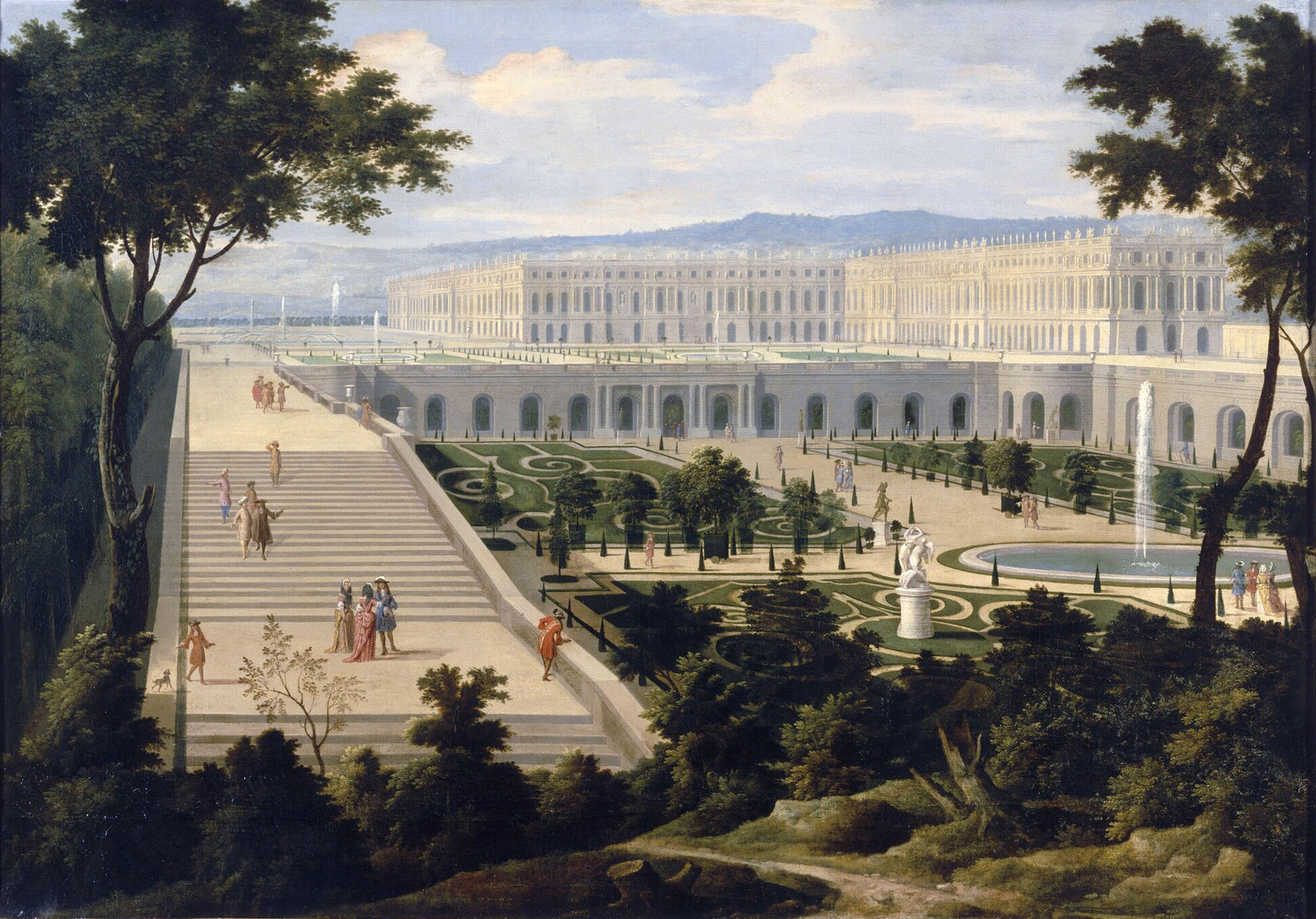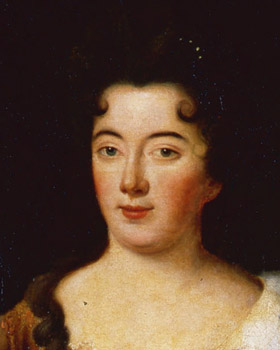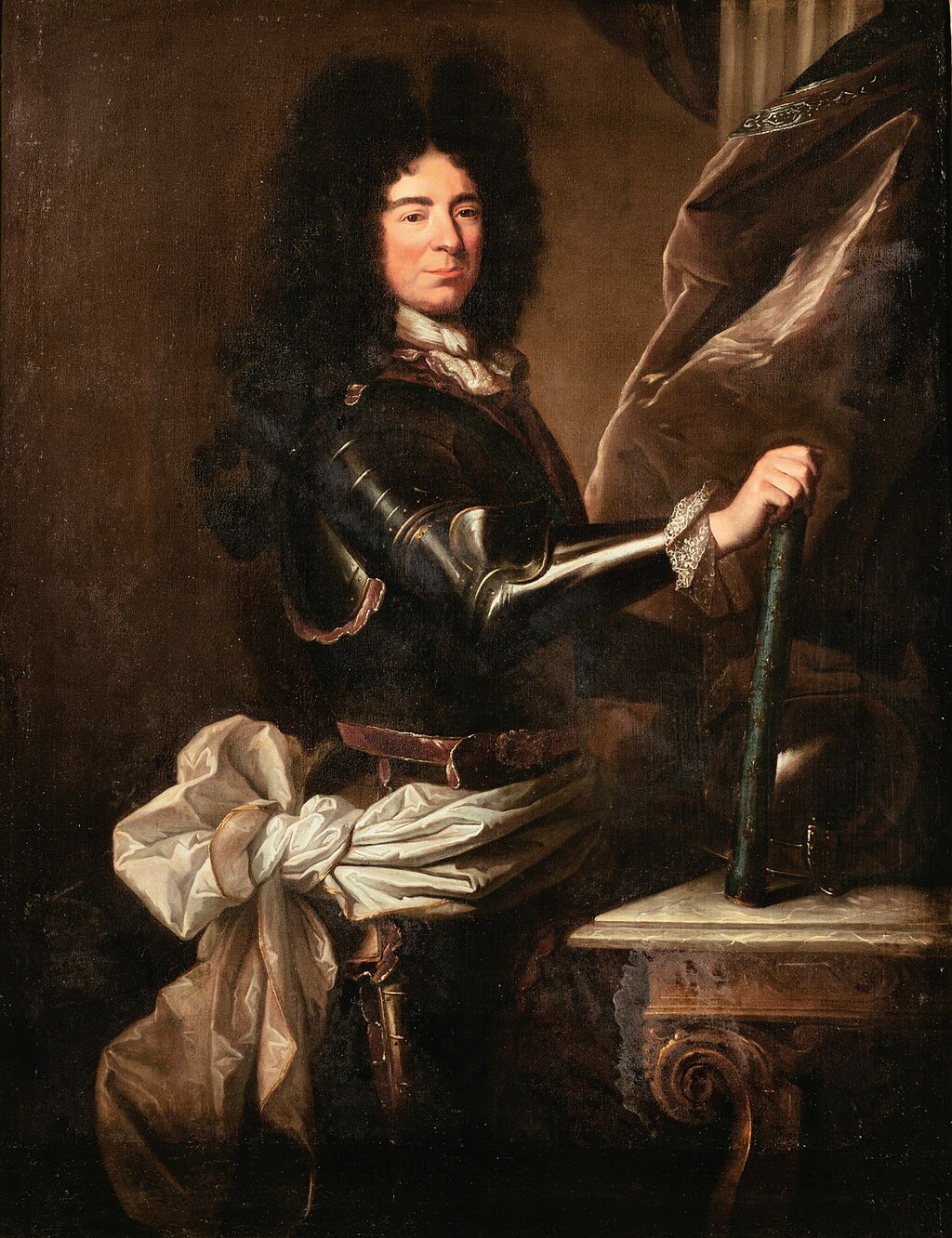Whereas Marie Antoinette's love of flowers was - and still is - widely known, she was not the only monarch at Versailles with a taste for floras. A century before the ill-fated queen arrived in France, her kinsman, Louis XIV, was proudly displaying his own taste for plants. In the Sun King's case, it was not the delicate violets or roses favoured by Marie Antoinette but rather the exotic orange blossoms.
The king loved the exquisite scent of orange blossoms as well as its prestige - after all, it is a plant that requires a certain degree of both warmth and care to grow. It has also been suggested that the king was attracted to the symbolism of the fruit - looking suspiciously like a sun, it was the ideal symbol for the Sun King. Furthermore, they were very expensive, thus aptly showcasing the king's wealth. For that reason, it is hardly a surprise that the king commissioned Le Vau to complete the impressive Orangery at Versailles. The king placed his order with La Vau as early as 1664 but twenty years later, he hired Mansart to considerably expand the building (at a further cost of over 1.5 million livres). Located immediately below the palace - its roof making up the very foundation of the parterres - the Orangery was the home of several southern additions: lemon trees, olives, dates, oleander - and orange trees. The building itself is impressive - vaulted galleries packed with greenery and large windows to let in the precious sunlight.
The king's initial reaction to his Orangery is recorded by the marquis de Dangeau. On 14 November 1685, "the king walked in the orangery at Versailles which he found very magnificent".
 |
| Gardeners at work at the Orangery of Versailles during Louis XIV |
The king's gardener imported the precious trees from all over southern Europe but favoured the Portuguese, Spanish and Italian ones. Yet, he did not limit himself to those regions - seeds were brought in from as far away as Santa Domingo and Algeria. The Portuguese were often imported from as far afield as China which sent their cost skyrocketing. Even those amongst his courtiers who had their own trees were approached with an offer of sale. One enterprising lady - the Duchesse de La Ferté - agreed to sell her twenty fully grown orange trees to the king for 2.200 livres. In comparison, the wages of Louis XIV's first gardener - Laurent Trumel - was 3.000 livres per year. Yet, even she sold her trees comparatively cheaply. The Duchesse de Verneuil sold 52 orange trees for 10.083 livres while one another receipt shows that the sourcing of orange trees "from various environs" cost the king another 38.175 livres.
It certainly helped that when Louis confiscated the estate of Nicolas Fouquet, his former superintendent of finance was said to have had up to a 1.000 orange trees - almost certainly a massive exaggeration, but those he did have were duly transferred to the king.
There appears to have been something almost frantic about the king's desire to gather as many trees as possible. For instance, he did not wait until summer for the precious cargo to be transported but had them delivered throughout the year, including in the depths of winter. Unfortunately, this meant that a considerable amount were dead on arrival. The king also ordered his existing stock of orange trees moved from his various other residences to fill the vaults of the Orangery. The intensive gathering resulted in Louis XIV having the largest collection of orange trees in Europe.
During the winter and colder periods, the trees were moved into the warmth and safety of the Orangery where they would be sheltered from the wind and rain. However, during the summer they were rolled out in all their glory - that was also the case when the king had guests to impress. For instance, the king had his collection on full display when the Siamese ambassador and his entourage visited France in 1686.
 |
| Interior of the Orangery |
Part of the prestige also consisted in keeping the orange trees alive - all year round. Upon the completion of the Orangery, 12.000 seedlings were transferred to the new establishment and the royal gardener was tasked with keeping them blooming on rotation. As a result, the king could enjoy his orange trees even during winter. The orange trees in the royal apartments were replaced in intervals of 15 days - ensuring that they would seemingly never wither. Initially, they were planted in solid silver pots, but the ongoing wars eventually made it necessary to melt down such luxuries.
To aid in his efforts, the king's gardener (La Quintinie) sought the expert advice of Henri Dupuis who specialised in citrus fruits. Dupuis would also be asked to supply more orange trees for the king's insatiable garden. It apparently worked for La Quintinie managed to invent his own variant of rooting which proved particularly successful. His mixture consisted of cow dung, powdered night soil (whatever that means), pigeon droppings, sheep manure, sand from Fontainebleau, grape marc and composted sod.
Having thus steeped the trees in three different types of excrement, La Quintinie turned his attention to how to keep the trees alive for longer. He discovered that by storing the young trees in planters made of oak with hatch walls (another invention of his own), he could then transfer them to larger urns. This served to keep the trees alive for decades and is a technique even used today.
It was a massive undertaking to keep the trees alive. By their very nature, orange trees are intended for a warm climate - and Paris in the 17th century was far from that. As it happens, the world was in the midst of a so-called "mini ice-age" which meant considerably lower temperatures than today - and made the work of the king's gardener all the more difficult.
 |
| The Orangery, 1690 |
As could be expected, even such a personal preference could be turned into a sign of favour. Louis XIV took to bestowing orange trees on favourite courtiers or as rewards for special deeds. When Madame de Montespan was at the height of her favour, Louis made sure that her private estate of Clagny was suitably equipped. In 1675 alone, Colbert paid a staggering 23.000 livres solely for orange trees for Clagny. The king even demanded that the most beautiful ones were taken to her ... "to please me" as he gallantly put it. While Madame de Montespan certainly enjoyed her share of the favour, there was another (albeit unintended) beneficent to the king's chosen trees: his wife.
Marie Thérèse had grown up in the sunlight of Spain and thus was well-acquainted with the scents and sights of orange trees from her childhood. Even though the king sent the best trees to his mistress, one might hope that his wife got her share too.
The scent itself was a massive part of Louis' attraction to this particular type of citrus. As a young man he had reveled in the strong, heady scents of his time but as he grew older, he became increasingly sensitive to them. Rather than the strong tuberose, he now favoured orange blossom.
The king's table was also benefited from the produce of the king's favoured tree. Oranges were duly incorporated into the king's meals, including marmalades, compots and tarts. During the weekly appartements, oranges were amongst the refreshments served in the Salon of Venus. It should be said that the king was far from the only one at court who enjoyed a good orange tree. The prince de Condé had a private collection which amounted to 215 trees in 1709 but even that paled in comparison to the 246 owned by the Duchesse d'Aiguillon. Meanwhile the Louvois-family could boast a collected number of 533.
There can be little doubt that the king was genuinely interested in the well-fare of his beloved trees. Even while campaigning in Franche-Comté, he inquired of Colbert how his trees were doing: "Tell me what the orange trees look like". While at Huy in 1675, he also ordered his trusted Colbert to continue furnishing La Montespan with more trees. Apparently, a fresh shipment had only recently arrived and the king was anxious to see them thrive. And thrive they did - today, eight of the king's own orange trees are still standing in his Orangery at Versailles.


